Returning to Master Fulcanelli
The Dwellings of the Philosophers
by
Fulcanelli
p102



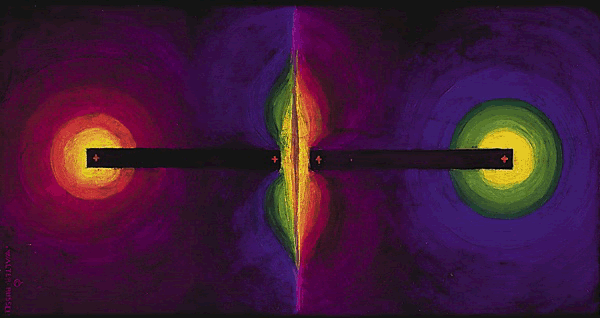
p 105
your instinct / inspiration / synchronicity 

The Dwellings of the Philosophers
by
Fulcanelli
p102

"Contemplate these two dragons carefully", says the Adept (3), "for they are the true principles of philosophy which the Sages have not dared to show their own children. The wingless one below is the fixed or the male and the one above is the volatile or the female, black and obscure (4), which will dominate for several months. The first is called sulphur or heat and dryness. And the last is called quicksilver or coldness and humidity. They are the sun and the moon, of mercurial source and sulphurous origin which, by means of continual fire, beautify themselves with royal ornaments so as to vanquish, once they are united, and change any metallic thing --- solid, hard, and strong --- into quintessence. They are the serpents and dragons that ancient Egyptians painted as a circle, head biting the tail, to express that they came from one and the same thing, which alone was enough, and that it perfected itself in its contour and circulation. They are the dragons that the ancient poets charged with guarding without sleeping the golden apples of the gardens of the Hesperide virgins. They are the same ones on which Jason, during his adventure of the Golden Fleece, poured the juice prepared by the beautiful Meda and whose discourse so filled the books of the philosophers, that no philosopher ever existed who did not write about them, from the true Hermes Trismegistus, Orpheus, Pythagoras, Artephius, Morienus and others up to myself. They are the two serpents sent and given by Juno who is the metallic nature, which the strong Hercules, that is to say the Sage, must strangle in his crib, that is to say vanquish and kill them so as to make them rot, corrupt, and engender at the beginning of his Work. They are the two snakes attached around the Caduceus and the stick of Mercury with which he wields his great power and transfigures himself as he wishes. He, says Haly, who kills one of them will also kill the other because one cannot die but with his brother. These two (which Avicenna calls ***** of Khorassan and Dog of Armenia), being then united in the vessel of the sepulcher, bite each other cruelly and through their great venom and furious rage never leave each other from the moment they have grabbed each other. They are the two sperms, masculine and feminine, described at the beginning of my Philosophical Rosary which are engendered (says Rasis, Avicenna, and Abraham the Jew) in the kidneys, entrails, and from the operations of the four elements. They are the humidity of metals, Sulphur, and Quicksilver, not the common ones which are sold by merchants and apothecaries, but those which give us so many beautiful and dear bodies which we love so much. These two sperms, said Democritus, cannot be found on the earth of the
living".
living".


. If we must admit a third, we shall find it in the one which results
from their combination and born from their mutual destruction. For no matter how much you
look and multiply the experiments, you will never find any other parents of the stone besides
the above mentioned two bodies, called principles from which comes the third one, heir of the
qualities and the mixed virtues of its parents. This important point is well worth being stated
precisely. These two principles, hostile because opposite, are so expressive on Louis
d’Estissac’s fireplace that even the beginner can recognize them without difficulty. We
recognize here, humanized, the hermetic dragons described by Nicolas Flamel, one winged ---
the hare-lipped monster --- the other wingless --- the gnome with the hairy torso
from their combination and born from their mutual destruction. For no matter how much you
look and multiply the experiments, you will never find any other parents of the stone besides
the above mentioned two bodies, called principles from which comes the third one, heir of the
qualities and the mixed virtues of its parents. This important point is well worth being stated
precisely. These two principles, hostile because opposite, are so expressive on Louis
d’Estissac’s fireplace that even the beginner can recognize them without difficulty. We
recognize here, humanized, the hermetic dragons described by Nicolas Flamel, one winged ---
the hare-lipped monster --- the other wingless --- the gnome with the hairy torso

p 105
Mediation, study, and above all a strong unshakeable faith will finally bring Heaven’s blessing upon their work. "For truly I say to you", says Jesus (Matt. 17:19), "if you have faith as a mustard seed, you shall say to this mountain, Move from here to there, and it shall move; nothing shall be impossible to you". For faith, spiritual certainty of truth not yet demonstrated, prescience of what is feasible, is the torch that God has placed into the human soul to enlighten, to guide, to instruct, and to elevate it.





 .................... going 3 6 9 on it
.................... going 3 6 9 on it 


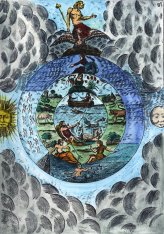
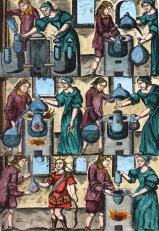
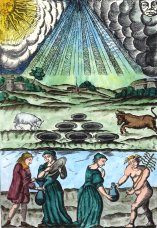

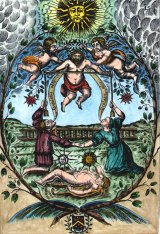
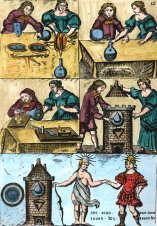
 )
)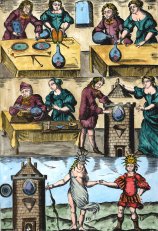

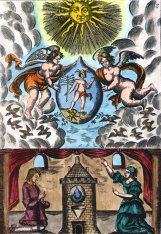


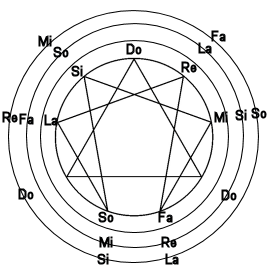
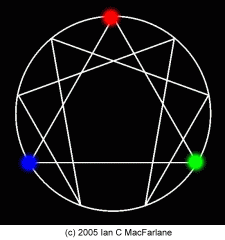
 (
( 








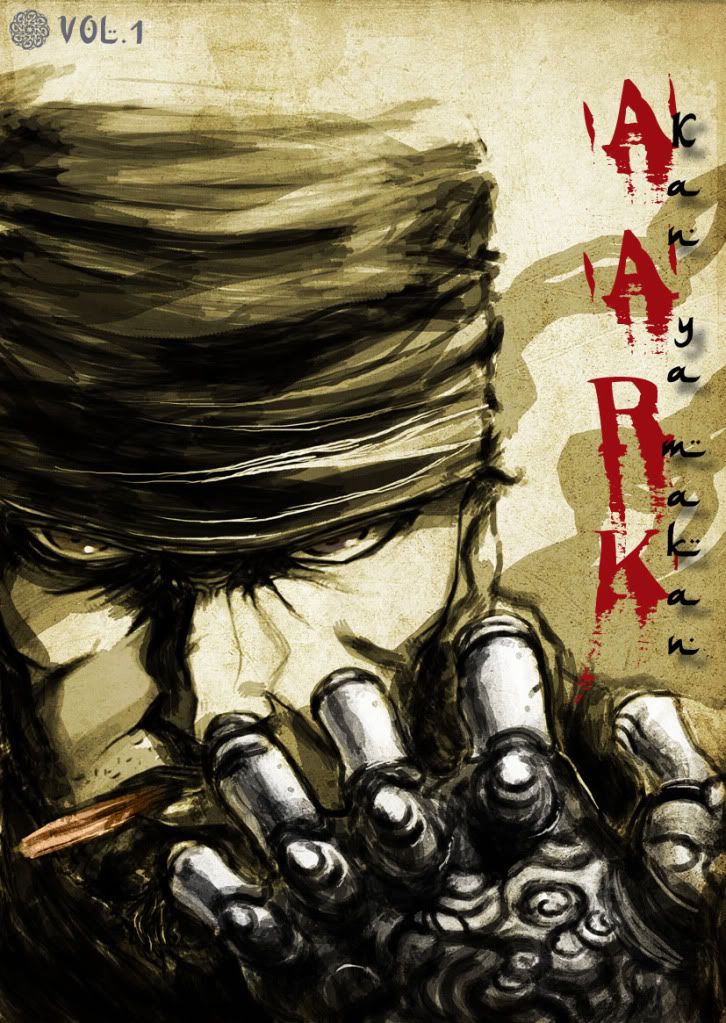
Comment